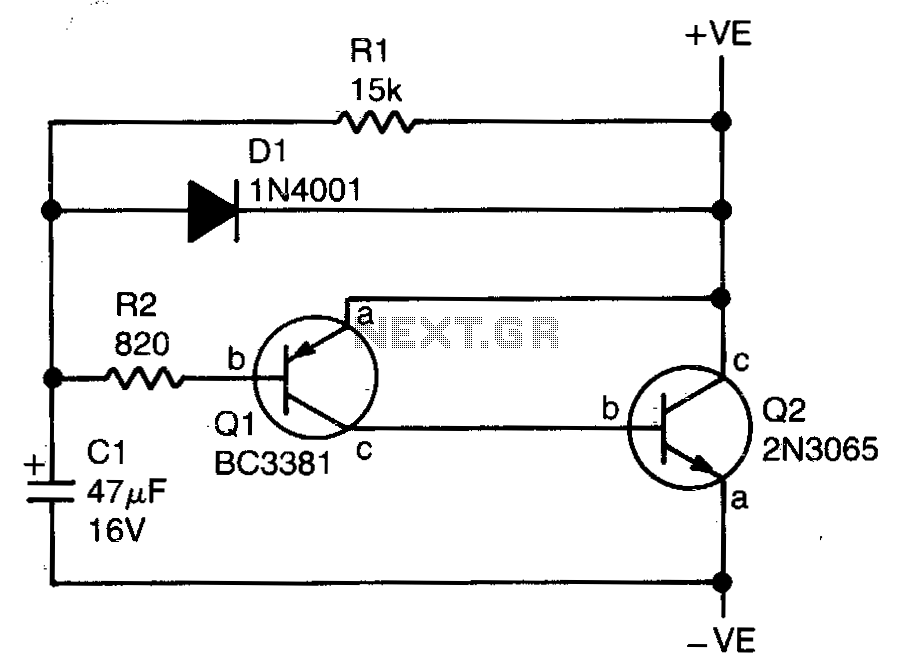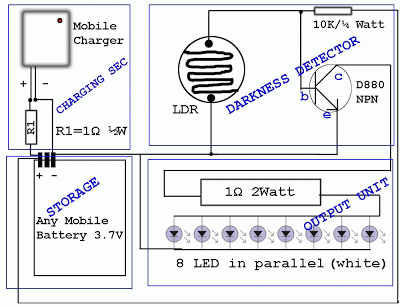
Courtesy Lighting with 7555

This circuit is intended to let the user turn off a lamp by means of a switch placed far from bed, allowing him enough time to lie down before the lamp really switches off. 15 seconds delayed switch-off. A good idea for bedroom lamps. Obviously, users will be able to find different applications for this circuit in order to suit their needs. More: Due to the low current drawing, the circuit can be supplied from 230Vac mains without a transformer. Supply voltage is reduced to 10Vdc by means of C1 reactance, a two diode rectifier cell D1 & D2 and Zener diode D3. IC1 is a CMos 555 timer wired as a
The circuit operates by utilizing a CMOS 555 timer configured in monostable mode, which allows for a delayed switching action. When the user activates the switch (S1), it triggers the timer, initiating a countdown period of 15 seconds. During this time, the lamp remains powered on. After the countdown completes, the timer output transitions to a low state, effectively turning off the lamp.
The power supply section of the circuit is designed to operate directly from the 230Vac mains, which eliminates the need for a bulky transformer. The capacitor C1 serves as a reactance element that limits the current drawn from the mains. Following this, a full-wave rectifier composed of diodes D1 and D2 converts the AC voltage to DC voltage. The Zener diode D3 is employed to regulate the output voltage, ensuring that the CMOS 555 timer receives a stable 10Vdc supply for reliable operation.
Additional components such as resistors and capacitors associated with the 555 timer will determine the time delay. The specific values of these components must be selected to achieve the desired 15-second delay. The output from the timer can be connected to a relay or a transistor switch that controls the lamp, providing isolation from the high voltage AC circuit.
This circuit design not only enhances convenience for users but also showcases versatility, as it can be adapted for various applications beyond simply controlling a bedroom lamp. The simplicity of the design, combined with the effective use of readily available components, makes it an excellent choice for DIY electronics enthusiasts.This circuit is intended to let the user turn off a lamp by means of a switch placed far from bed, allowing him enough time to lie down before the lamp really switches off. 15 seconds delayed switch-off A good idea for bedroom lamps. Obviously, users will be able to find different applications for this circuit in order to suit their needs.
Due to the low current drawing, the circuit can be supplied from 230Vac mains without a transformer. Supply voltage is reduced to 10Vdc by means of C1 reactance, a two diode rectifier cell D1 & D2 and Zener diode D3. IC1 is a CMos 555 timer wired as a 🔗 External reference
The circuit operates by utilizing a CMOS 555 timer configured in monostable mode, which allows for a delayed switching action. When the user activates the switch (S1), it triggers the timer, initiating a countdown period of 15 seconds. During this time, the lamp remains powered on. After the countdown completes, the timer output transitions to a low state, effectively turning off the lamp.
The power supply section of the circuit is designed to operate directly from the 230Vac mains, which eliminates the need for a bulky transformer. The capacitor C1 serves as a reactance element that limits the current drawn from the mains. Following this, a full-wave rectifier composed of diodes D1 and D2 converts the AC voltage to DC voltage. The Zener diode D3 is employed to regulate the output voltage, ensuring that the CMOS 555 timer receives a stable 10Vdc supply for reliable operation.
Additional components such as resistors and capacitors associated with the 555 timer will determine the time delay. The specific values of these components must be selected to achieve the desired 15-second delay. The output from the timer can be connected to a relay or a transistor switch that controls the lamp, providing isolation from the high voltage AC circuit.
This circuit design not only enhances convenience for users but also showcases versatility, as it can be adapted for various applications beyond simply controlling a bedroom lamp. The simplicity of the design, combined with the effective use of readily available components, makes it an excellent choice for DIY electronics enthusiasts.This circuit is intended to let the user turn off a lamp by means of a switch placed far from bed, allowing him enough time to lie down before the lamp really switches off. 15 seconds delayed switch-off A good idea for bedroom lamps. Obviously, users will be able to find different applications for this circuit in order to suit their needs.
Due to the low current drawing, the circuit can be supplied from 230Vac mains without a transformer. Supply voltage is reduced to 10Vdc by means of C1 reactance, a two diode rectifier cell D1 & D2 and Zener diode D3. IC1 is a CMos 555 timer wired as a 🔗 External reference





